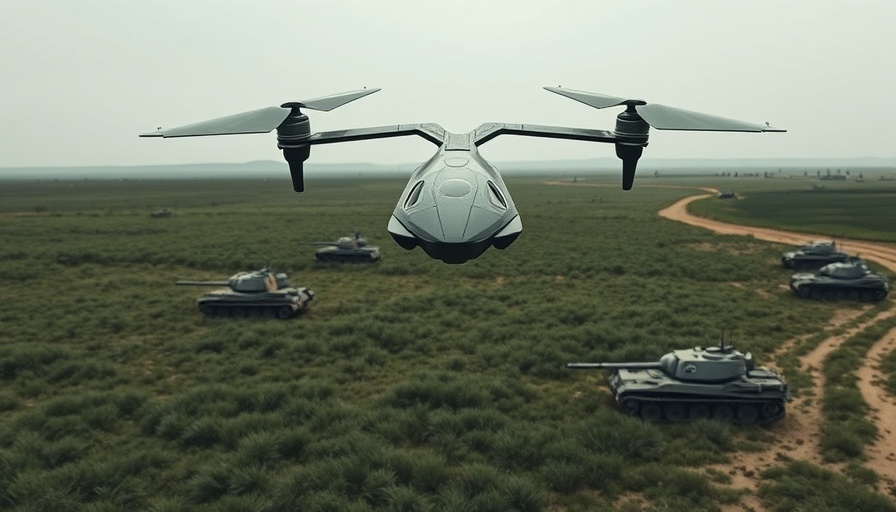
The Rise of Counter-Drone Technology in Modern Warfare
As drone usage in military conflict escalates, the British Army's recent trials of a drone swarm-based counter-unmanned aerial systems (C-UAS) initiative highlight a crucial shift in defense strategies. This innovative program, known as Project Vanaheim, emerges in response to significant threats posed by small drones, particularly those seen in the ongoing conflict in Ukraine.
A Dynamic Testing Environment for Immediate Solutions
Project Vanaheim distinguishes itself from traditional military assessments; it serves as a practical testing ground for direct feedback from soldiers. The collaboration between British and American forces aims to deploy immediate, cutting-edge technology directly onto the battlefield. During the first trials in Germany, the system developed by Alpine Eagle, a European tech firm, succeeded in demonstrating its capabilities to neutralize drone threats effectively.
Addressing the Operational Gaps in Drone Defense
The need for advanced C-UAS systems stems from the growing sophistication of drone technology, particularly by hostile forces. The Ministry of Defence (MoD) specified its needs within the project, requiring solutions that can be easily operated by non-specialist soldiers and effectively target small, agile FPV drones. With Alpine Eagle's Sentinel system successfully meeting these criteria, it emerges as a vital component in modern military defense strategy against aerial threats.
Alpine Eagle's Vision for the Future of Air Defense
Under the leadership of Michael Golden, a former Royal Navy officer, Alpine Eagle plans to extend its reach in the UK and invest in domestic manufacturing and development. This ambition aligns with Golden's insights on the need for European solutions to European threats: "Any solution built has to be by Europe, including the UK, for Europe." This cooperative approach reflects a broader trend of joint defense strategies across nations dealing with emerging drone warfare challenges.
The Implications for Military Strategies Worldwide
The trial's outcomes underscore a fundamental shift in military procurement and strategy. Jan-Hendrik Boelens, Alpine Eagle's founder, asserts that the war in Ukraine signals a need for governments to rethink their approach to technological advancements in warfare. As smaller, agile drones become commonplace, understanding their operational impact can redefine military engagements and the future landscape of defense technology.
Understanding the implications of these advancements can empower readers and ignite responsibility towards exploring and supporting the development of similar technologies that can protect against increasing drone threats. The dynamics of warfare are evolving rapidly, and keeping pace with these changes is critical for anyone involved in military technology.
Conclusion and Call to Action
As the UK military embraces innovative technologies such as the drone swarm-based C-UAS system, it is essential for the defense community, tech enthusiasts, and policymakers to engage with these developments. The Ministry of Defence's proactive approach allows for technological advancements that can reshape defense protocols. Consider exploring more about these innovations and how they can influence the future of military strategies.
 Add Row
Add Row  Add
Add 




Write A Comment